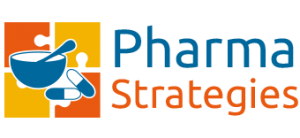- In Phase III KITE study, Beovu (brolucizumab) 6 mg achieved its primary endpoint of non-inferiority to aflibercept 2 mg in mean change in best-corrected visual acuity (BCVA) at year one (week 52)1
- In a key secondary endpoint, more than half of Beovu patients were maintained on a three-month dosing interval through year one, following the loading phase1
- Beovu showed superior improvement versus aflibercept in change of central subfield thickness, a secondary endpoint, over the period of week 40 through week 521 …
- Post hoc EXPAND analysis showed improvements in cognitive processing speed in patients with active and non-active SPMS treated with Mayzent1
- Subgroup analyses of the EXPAND trial showed the value of early treatment initiation with Mayzent in patients with active SPMS as positive effects on disability, cognitive processing speed and relapse outcomes were sustained for up to five years2
- Results from EXCHANGE interim analysis presented at ACTRIMS-ECTRIMS reinforced its safety and tolerability …
- New post hoc data from Phase III ASCLEPIOS trials showed newly diagnosed, treatment-naïve patients experienced reductions in annualized relapse rates, MRI lesion activity and reductions in time to disability worsening when treated with Kesimpta vs teriflunomide1
- Additional safety data in over 1,800 patients who continued Kesimpta treatment or switched therapy from previous studies reinforce the favorable safety profile of Kesimpta in patients with relapsing forms of multiple sclerosis (RMS)2
- Baseline serum …
In the late 1800s, at a time when people still traveled in horse-drawn carriages and lit homes with wax candles, scientists discovered nuclear power. They found curious elements, such as uranium and radium, which emit invisible rays of energy. They called this energy radiation.
When they noticed that radiation had the power to burn skin, they applied it to treat cancer. The benefits were evident, but it would take scientists decades to understand how to wield the energy that emerges from the core of these special atoms safely.
Now, a new form of nuclear medicine is on the …
A major new report led by the Novartis Foundation and Microsoft shows how investment in data and AI is critical to drive the health system improvements needed to respond to and recover from the COVID-19 pandemic and the world’s other greatest healthcare challenges.
Reimagining Global Health through Artificial Intelligence: The Roadmap to AI Maturity was developed by the Broadband Commission Working Group on Digital and AI in Health, which the Novartis Foundation and Microsoft co-chair. Based on a landscape review of over 300 existing use cases of AI in health, the report shows how AI …
- Novartis will present 48 abstracts from its leading MS portfolio, including new data on recently FDA-approved Kesimpta® (ofatumumab)—the first and only self-administered, targeted B-cell therapy for relapsing forms of MS (RMS)—Mayzent® (siponimod) and Gilenya® (fingolimod)
- New pivotal data from ASCLEPIOS trials evaluating the efficacy and safety of Kesimpta in a subgroup of treatment-naïve RMS patients will be presented for the first time1
- …
Asthma affects 358 million people globally and, despite available therapies, many patients’ lives are still impacted by the disease.1,2 Uncontrolled asthma can cause a significant personal, health and financial burden to those living with it. Bertrand Bodson, the Chief Digital Officer of Novartis, has had asthma for over 10 years. He shares his experience of living with asthma, and how this drives his work at Novartis to reimagine medicine using the power of data and digital.
My journey with asthma
…
- High-dose, once-daily Enerzair® Breezhaler® [IND/GLY/MF] reduced asthma exacerbation rates by 21% (moderate or severe) and 31% (severe) versus medium-dose, over 52 weeks1
- Once-daily Enerzair Breezhaler, which includes an optional digital companion (sensor and app), is the first LABA/LAMA/ICS* fixed-dose combination approved for patients whose asthma is uncontrolled with a LABA/ICS2
- Post hoc analysis complements findings from pivotal Phase III IRIDIUM study recently published …
- Tabrecta™ (capmatinib, formerly INC280) is the first and only therapy approved by the FDA to specifically target metastatic non-small cell lung cancer (NSCLC) with a mutation that leads to MET exon 14 skipping (METex14)
- METex14 is an important biomarker for physicians to consider when selecting metastatic NSCLC treatment options1
- In the US, METex14 metastatic NSCLC is diagnosed in ~4,000-5,000 patients annually and typically indicates aggressive disease with a poor prognosis2-3
Basel, …
Novartis has renamed the previously acquired AveXis to Novartis Gene Therapies. The change signifies the growing importance of gene therapy to building a leading, focused medicines company with advanced therapy platforms.
Building on the success of Zolgensma® (onasemnogene abeparvovec), Novartis Gene Therapies will be responsible for the research, development, manufacturing and commercialization of the next wave of AAV-based innovative gene therapies. Novartis Gene Therapies will also provide manufacturing support for gene therapy work conducted by other Novartis units. Dave Lennon, …
Follow us on Facebook
ADDRESS – ZIMBABWE
Suite 204, Block 1
Long Cheng Plaza
Mutley Bend, Belvedere
Harare, Zimbabwe
ADDRESS – ZAMBIA
Plot 43504
Apex Chalala
Off Kasama Road
Lusaka Zambia
